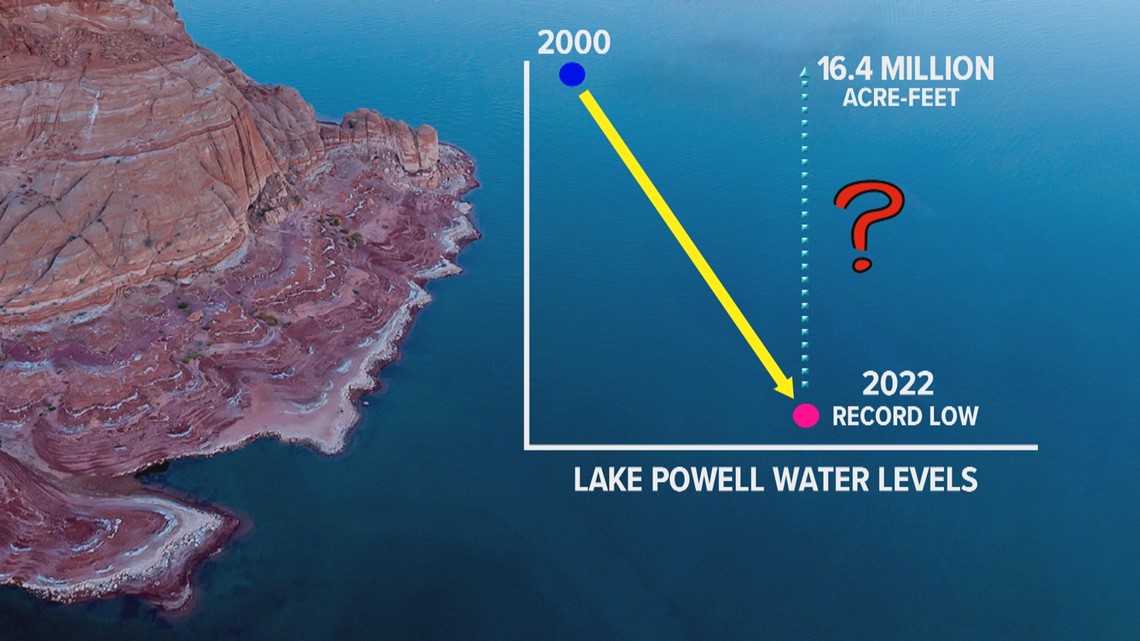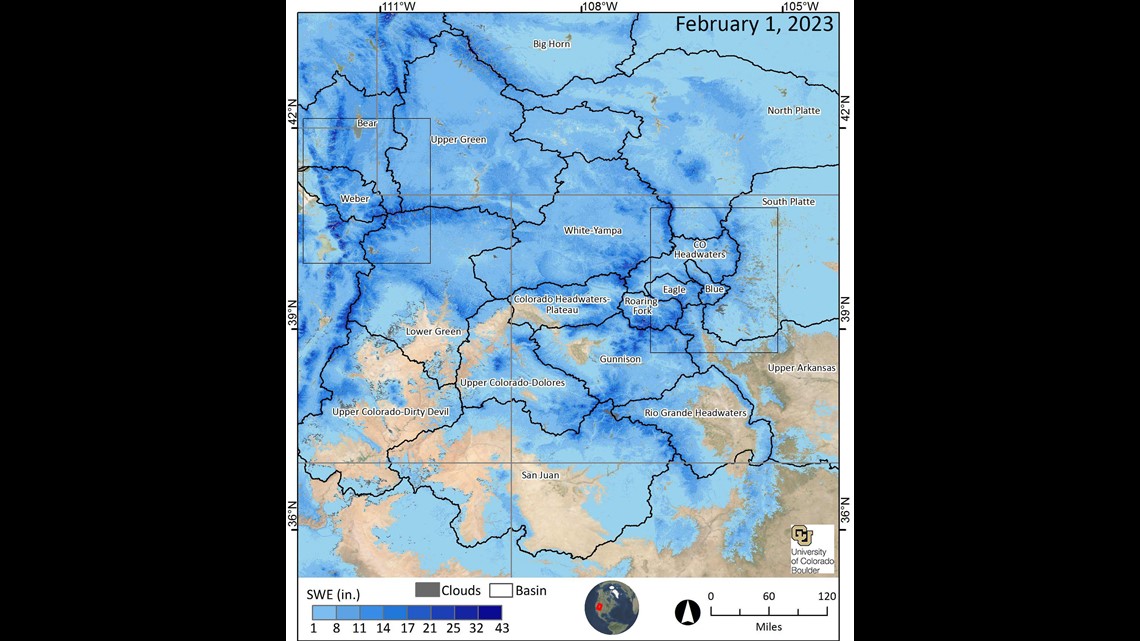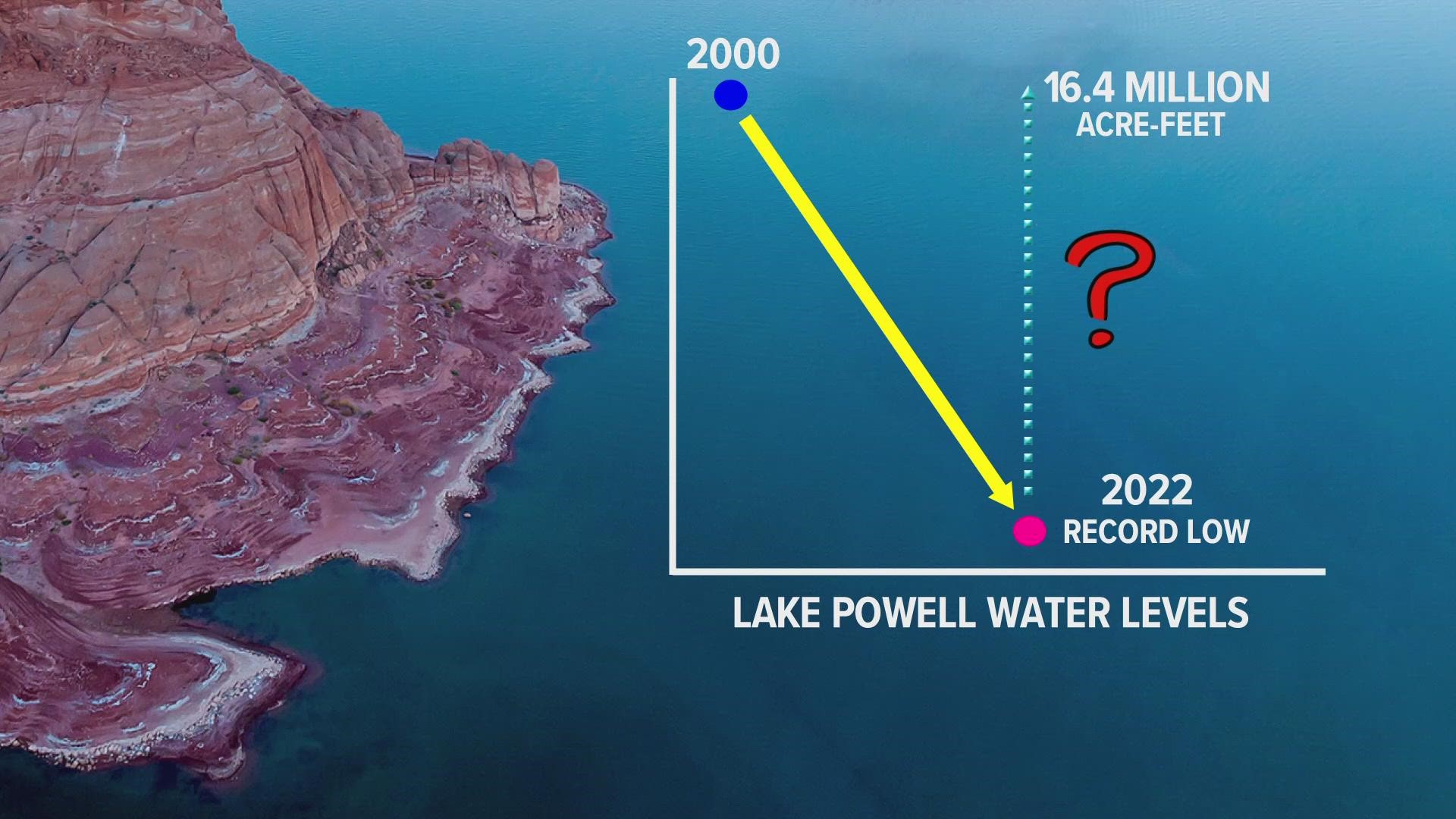COLORADO, USA — The water levels at Lake Powell have been on a 22-year decline, and the reservoir hit a record low elevation last year.
According to the Upper Colorado River Commission (UCRC), it would take 16.4 million acre-feet of water to fill Lake Powell back up to where it was in 2000, which was when it was last 90% full.
But hydrologists estimate that it would take 15 years of above average snowpack to refill Lake Powell. That number may seem surprising to some, given how much water is in a single winter's snowpack.


So far, the 2022-23 snow season has been big. On Feb. 1, the Upper Colorado River Basin was 43% above average.
An estimate by the Institute of Arctic and Alpine Research (INSTAAR) at the University of Colorado showed that there was 29.6 million acre-feet of water sealed inside the snowpack in the Upper Colorado River Basin.


INSTAAR researchers used a fusion of satellite data, computer models, and ground observations from SNOTEL and other sources to estimate the amount of snow-water equivalent in the current snowpack.
So, if you could magically put that water directly into the reservoir, you could fill Lake Powell to the brim right now, but in reality, a lot of that snowmelt has to travel more than 300 miles to get to Lake Powell.
And on that journey, some of the water gets absorbed into the drought-stricken soils, and some of the water gets intercepted by upstream water users.
Another big factor to consider is evaporation. And the evaporation rates are increasing as the atmosphere warms and increases its capacity to hold water vapor.
Those factors subtract a lot more water than you might think.
The UCRC said if the snow stays steady through the rest of the season, and finishes up at about 40% above average, they would expect Lake Powel to rise by about 1.5 million acre-feet. That’s only a 6% increase.
So, it would take 10 consecutive snow seasons with 40% above average snowpack to fill Lake Powell back up to where it was 23 years ago.
But wait — we are not done subtracting. We also have to consider that water needs to be released from Lake Powell every year to supply water to users downstream.
The UCRC says that adds another five years to the equation.
So, that’s how you get the estimate that it would take 15 years of above average snowpack to refill Lake Powell.
And don’t forget, those 15 years would have to happen consecutively. And over the last 22 years, there hasn’t even been more than two consecutive above average snow seasons in the Upper Colorado River Basin.
SUGGESTED VIDEOS: Colorado Climate

